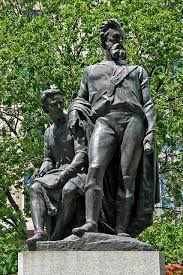This post was originally published on The Trad Pad on 2 January 2011. Happy New Year everyone ... particularly to those who did it tough this year. Please take on board the thoughts of Minnie Louise Haskins
Happy New Year! May the year be kind to you and bring you blessings, wisdom, peace, and prosperity! The last day or two has exhibited some coincidence. Firstly, Hay Quaker published, in toto, the poem The Gate of the Year by Minnie Louise Haskins.
~~~~~~
Happy New Year! May the year be kind to you and bring you blessings, wisdom, peace, and prosperity! The last day or two has exhibited some coincidence. Firstly, Hay Quaker published, in toto, the poem The Gate of the Year by Minnie Louise Haskins.
Minnie Louise Haskins
I said to the man who stood at the gate of the year,Perhaps readers have heard this poem, or part of it, before. It was made famous by the Christmas Speech of King George VI delivered in 1939. You can hear the actual speech – it is quite moving given it is made at the time of the first Christmas of World War II – here.
"Give me a light that I may tread safely into the unknown."
And he replied, "Go into the darkness and put your hand into the hand of God.
That shall be to you better than light and safer than a known way!"
So I went forth and finding the Hand of God
Trod gladly into the night.
He led me towards the hills
And the breaking of day in the lone east.
So heart be still!
What need our human life to know
If God hath comprehension?
In all the dizzy strife of things
Both high and low,
God hideth his intention.
Secondly, I decided to get out of the house for the first time since Christmas Midnight Carols and Eucharist at All Saints, Mitcham and go to see the much lauded movie, The King’s Speech. It is the story of the relationship between the Australian speech therapist, Lionel Logue, and King George VI.
Those sitting around me in the packed movie theatre were clearly as impressed as I.
I was however surprised at the ending. I don’t think, in such an historical movie, it is giving away much to describe the ending of this movie. I thought the movie somehow would finish with the 1939 Christmas Speech. This is arguably the most famous, most remembered, and most quoted of all the King George VI’s speeches. This doesn’t happen. The movie concludes with the King’s Speech at the beginning of World War II.












